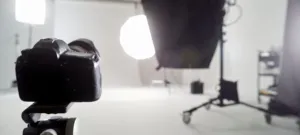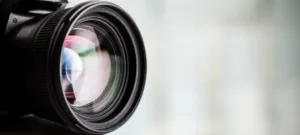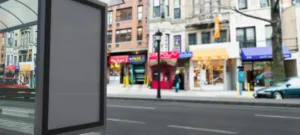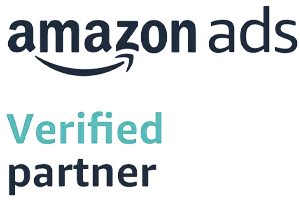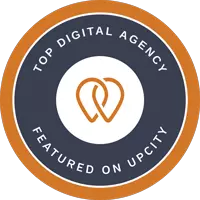Use our AI-powered chat to more quickly connect with Corkboard Concepts thought leadership and find answers to questions you may have!
Use our AI-powered chat to more quickly connect with Corkboard Concepts thought leadership and find answers to questions you may have!
OOH – What it is and why you should be all about it
First, what is OOH:
Out-of-home or (OOH) advertising, is any advertising that consumers see or engage with outside of their home. Perhaps one of the most notable is the billboard. We see these everywhere in our daily life. But you should also add to that wallscapes, posters, and place-based media seen in locations like businesses and even on busses and trucks. Notably, these formats cannot be skipped over, blocked, or even deleted. That is key and you know they get noticed. Any advertisement outside of your residence falls into this. Typically OOH advertising will fall into four main categories: billboards, street furniture, transit, and alternative – like a flyer. Within the US, OOH advertising is utilized by thousands of operators in all of the 50 states. It is also worth noting that the top 5 companies in the US spend the most in this space. That’s no accident. Companies like McDonald’s, HBO, Apple, GEICO, and Amazon all take advantage of this for a reason. Within Europe, the UK and France are first and second when it comes to the largest markets for OOH. Understanding why this is will be very beneficial to your business, no matter the size and reach.What you need to know:
Without a doubt, OOH formats reach consumers. You are processing them constantly throughout your day even if you do not realize it. As people go about their normal daily routines, either commuting, shopping, and walking, they are exposed to OOH and the messages businesses want to spread. The 2016 Nielson Out-of-Home Advertising Study illustrated that 91% of US residents over the age of 16 are reached by OOH advertisements. That’s a huge number! It is proposed that in the past month, 80% of them will have noticed an OOH ad, and will even take note of the message being put forth. OOH offers businesses the ability to achieve massive reach within a given market. It also provides marketers a very broad stroke when it comes to raising brand awareness and recall for their clients.
OOH is Highly Targeted.
Since OOH placements are very location-specific, each location is carefully scrutinized to offer the best return for the client based on the message being advertised. This is very important when considering regional expansion for a business or just staying in front of the home audience. As a location-based marketing tool, OOH leverages mobile data to identify patterns of travel throughout the day for the desired audience. The data then provides insight when determining where you should place your OOH messages. This process allows audience creation in the real world – and then serves them messages on physical media. Today, advertisers can apply audience segmentation into their OOH media planning. Shockingly, you can get even more laser-focused with this. The use of mobile billboards, for example, follows a prescribed route aimed at reaching a very specific audience. It is possible to predict when and where target audiences will be and then intercept them with a prescribed message. With proximity marketing, we can dominate strategic locations: grand openings, events, trade shows, high traffic areas, specific zip codes, competitor locations, etc. OOH is still very relevant in today’s media landscape. By leveraging data insights, we can engage with your audience during key moments in their day. This allows for maximum exposure – to the exact right people. Broad reach, narrow focus.OOH Allows for Creative Impact
Billboards specifically provide a big canvass for brand creative. When you need to cut through the clutter of everyday environments, almost nothing is better. It’s difficult to beat being positioned in the public domain. It’s a clear benefit of the mighty billboard and means you have greater control over where your brand is placed. With digital or print, it is possible to find your ad published alongside something offensive that can damage your brand without you even knowing or having control. With OOH, consumers are more cognizant of the paid space and don’t associate you with the next billboard down the road. That does not tend to be the case when ads show up on the same page of a site. OOH lets creative teams be just that, creative. They have the ability to be bold, loud, eye-catching, and daring. Award-winning OOH examples use visuals paired with clever headlines. Some are animated while others use extensions beyond the board itself to create attention-grabbing visuals. Though it is often recommended that OOH creative be kept simple, that does not mean it can’t also be bold. A clear CTA and compelling imagery are key. Remember, you may have a short period of time to get the point across. Be locally relevant when planning your message. Stretch the creative boundaries to drive genuine connections and lasting impressions, but always stay authentic to the brand.OOH Drives Online Engagements
You might not think it, but one of the biggest benefits of OOH media is its ability to amplify other media channels. Research has shown an incremental ROI of an overall media plan that includes a multitude of channels is much more well-rounded. Even USA Touchpoints supports this, noting that the addition of OOH potentially increases the reach by up to 300%. That’s rather significant. Time and again it has been shown that pairing mobile display advertising to OOH campaigns does produce stronger results. Planning your OOH and mobile campaigns together can ultimately lead to higher click-through rates. Achieve this by unifying and delivering ads in both channels in the same key locations. The end result is the two channels reinforcing each other and adding frequency to the messaging. Your customers will see you in both the digital and physical landscapes.OOH is Cost-Effective
OOH media formats provide brands national reach at a relatively low cost. Scalability and wide coverage are both large benefits of OOH media, and incorporating them is a cost-effective choice when planning your marketing strategy. A majority of advertising dollars tend to be allocated to traditional and digital channels. Though OOH drives higher ROI, we typically see less budget being directed here. Depending on the business, OOH should be driving the overall advertising investment and should not be a leftover spend. Maintaining a balanced media mix is good., but OOH is an important part of that mix and should not be under-allocated.OOH is Innovative
Take notice the next time you are out. You will see that the OOH industry provides innovative ways of viewing ads. This makes it more relevant now than ever to advertisers. Particularly when you consider how often it leads to an online interaction through a mobile device. There are also improvements being made when it comes to measuring engagement. Efforts are well underway to standardize OOH measurements across the industry. Agencies like ourselves, are also exploring how to use mobile data or AI to record actual – not estimated – impressions from our campaigns. Integrating the campaigns with mobile display advertisements provides new ways to apply attribution to the medium. This industry is also experiencing growth due to the benefits of programmatic digital creativity. This has allowed for dynamic creative and very quick changes to ads being displayed. The DOOH industry is still in its infancy, but its potential is wide-reaching and adds yet another dimension to the versatility of the medium. OOH has long embraced emerging industries where others have shied away. Some of the most regulated industries like vaping and cannabis have leveraged OOH to connect with their target consumers. And if you live in Nevada, you know a host of other businesses that have taken advantage of this as well.Don’t Want To Miss Anything? Sign Up For Our Newsletter!
Don’t Want To Miss Anything? Sign Up For Our Newsletter!
Embrace the Change
No business experiences growth by sitting on the sidelines. Change needs to be embraced and recognized as an opportunity. The strides made today with OOH will benefit marketing agencies and businesses everywhere.
Matt is our creative Photographer and Advertising Specialist. He has accomplished a lot over the course of his career including landscape design, photography for a few magazines, and running his own photography business. He enjoys being part of the Corkboard team because of the variety of industries we work in. Helping businesses succeed is something he finds rewarding.

Matt is our creative Photographer and Advertising Specialist. He has accomplished a lot over the course of his career including landscape design, photography for a few magazines, and running his own photography business. He enjoys being part of the Corkboard team because of the variety of industries we work in. Helping businesses succeed is something he finds rewarding.
Read More By This Author

